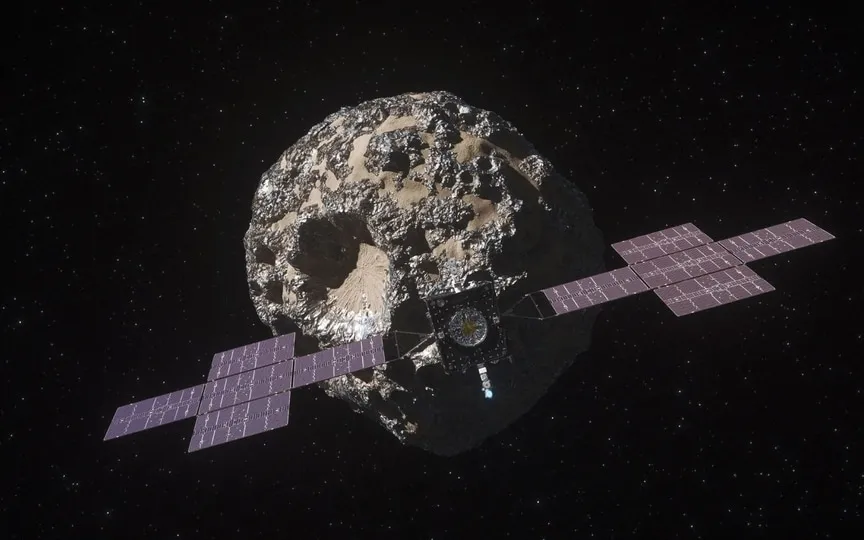NASA Launches Mission to Explore Psyche Asteroid
NASA’s Psyche Asteroid probe has embarked on an unprecedented expedition to a space rock abundant in valuable metals, marking a significant milestone. This extraordinary mission by NASA is the initial endeavor to explore a celestial body composed primarily of metals, deviating from the typical rocky or icy compositions found in asteroids. Experts anticipate that this mysterious object could provide valuable knowledge about the concealed cores of Earth and other rocky planets, suggesting it may be the remnants of a bygone planet.
Amid cloudy midday skies, SpaceX catapulted a satellite into space from NASA’s Kennedy Space Center. Destination? The Psyche asteroid, after which it is named, is expected to arrive in 2029. An hour after liftoff, ground controllers jubilantly confirmed the successful separation of the spacecraft from the rocket’s upper stage.
A metal world of enormous proportions
NASA’s foray into the world of metallic asteroids marks a significant departure from decades of exploration of distant worlds composed primarily of rock, ice or gas. Psyche, the largest of about nine metal-rich asteroids identified so far, orbits the Sun alongside countless other space rocks in the outer region of the Central Asteroid Belt, which lies between Mars and Jupiter. It was discovered in 1852 and christened after the alluring Greek goddess of the soul.
The dimensions of this giant asteroid are about 144 miles wide and 173 miles long, based on radar and astronomical surveys. Scientists believe it is enriched with metals such as iron, nickel and possibly silicates. Its surface is mostly gray and probably coated with small metal particles from cosmic collisions.
For now, Psyche is just a faint glimmer in the night sky, shrouded in mystery until a spacecraft reaches it after a journey of more than 2 billion miles. This asteroid is believed to be a relic of the Solar System from 4.5 billion years ago and has the potential to unravel fundamental questions about the origin of life on Earth and the factors that make our planet habitable.
This $1.2 billion mission will take a circuitous route to reach the asteroid. In 2026, a spacecraft equipped with solar panels will swing past Mars to gain gravity. Three years later, it reaches the asteroid, attempting to form an orbit with distances ranging from 47 miles to 440 miles. This installation is expected to last until at least 2031.
Originally set to launch a year ago, the mission had been delayed due to software testing issues and management challenges, extending the travel schedule. Thus, the spacecraft’s encounter with the asteroid is now expected in 2029, a departure from the original prediction of 2026.




